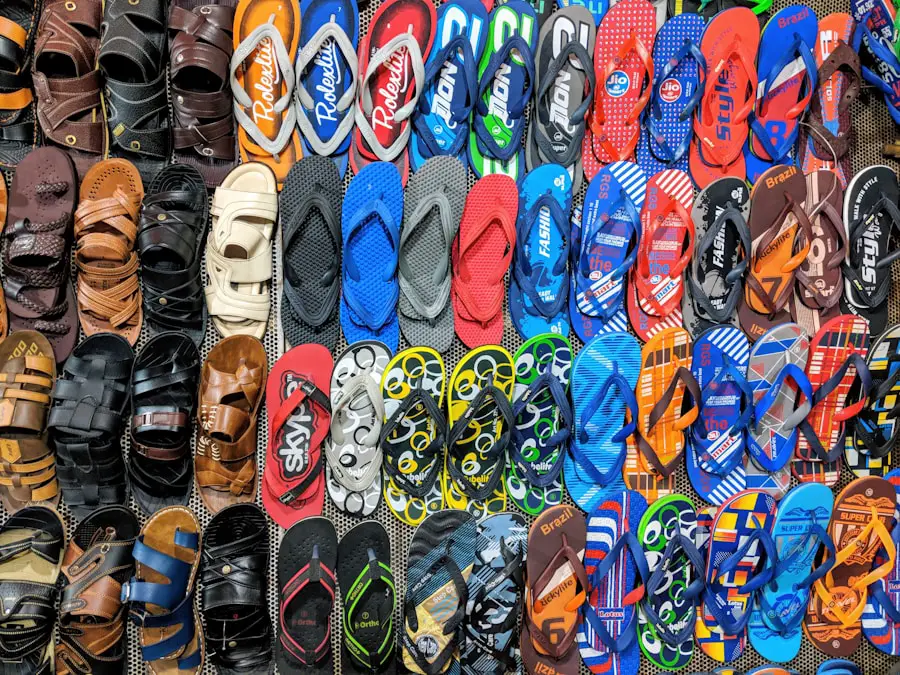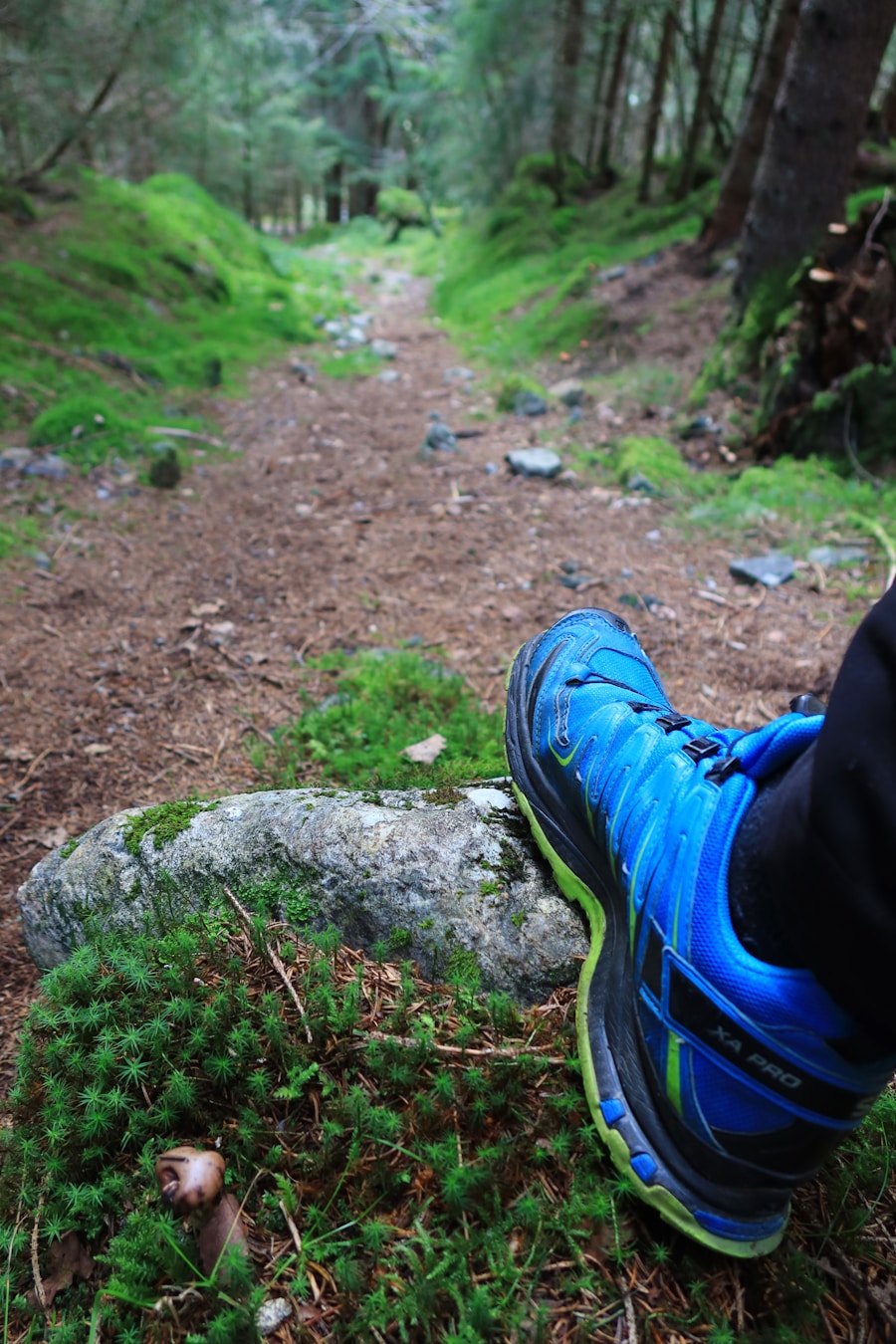Hoka One One, a brand that has gained significant traction in the running and hiking communities, is renowned for its innovative approach to footwear design. Founded in 2009 by Nicolas Mermoud and Jean-Luc Diard, Hoka emerged from a desire to create shoes that offered superior cushioning and support, particularly for long-distance runners. The brand’s unique aesthetic, characterized by oversized midsoles and a distinctive silhouette, quickly caught the attention of outdoor enthusiasts.
As the brand expanded its offerings, it ventured into the realm of hiking shoes, aiming to provide the same level of comfort and performance that had made its running shoes popular. Hoka hiking shoes are designed with the same principles that underpin their running counterparts: maximal cushioning, lightweight construction, and a focus on stability. This combination makes them an appealing choice for hikers who seek comfort on rugged terrain.
The brand has developed a range of models tailored to different hiking needs, from day hikes to more challenging backcountry adventures. As outdoor activities continue to grow in popularity, understanding the features and benefits of Hoka hiking shoes becomes essential for anyone looking to invest in quality footwear for their adventures.
Key Takeaways
- Hoka hiking shoes are known for their innovative design and maximal cushioning, making them popular among hikers and outdoor enthusiasts.
- The comfort and cushioning of Hoka hiking shoes are highly praised, providing excellent support and shock absorption for long hikes and rugged terrain.
- Hoka hiking shoes offer impressive traction and stability, with aggressive outsoles and supportive midsoles to keep hikers steady on various surfaces.
- The durability and construction of Hoka hiking shoes are top-notch, with high-quality materials and solid construction that can withstand tough outdoor conditions.
- Despite their sturdy construction, Hoka hiking shoes are surprisingly lightweight and flexible, allowing for agile movement and reduced fatigue during long treks.
- Many customers rave about the comfort and performance of Hoka hiking shoes, citing their reliability and support for challenging hikes.
- When compared to other hiking shoe brands, Hoka stands out for its unique cushioning technology and lightweight design, making it a top choice for many outdoor enthusiasts.
- In conclusion, Hoka hiking shoes are highly recommended for their exceptional comfort, cushioning, traction, durability, and lightweight design, making them a great choice for hikers of all levels.
Comfort and cushioning
Shock Absorption and Plush Feel
The brand employs a thick EVA foam midsole that absorbs shock and provides a plush feel underfoot. This cushioning is particularly beneficial during long hikes, where fatigue can set in quickly due to the impact of uneven terrain.
Promoting a Natural Gait Cycle
Hoka’s design philosophy emphasizes a “rocker” shape, which promotes a natural gait cycle and encourages forward momentum. This design not only enhances comfort but also reduces the strain on joints, making it easier for hikers to tackle challenging trails.
Breathability for Extended Comfort
In addition to the cushioning, Hoka hiking shoes often feature breathable mesh uppers that contribute to overall comfort. These materials allow for adequate airflow, helping to regulate temperature and moisture during hikes. The combination of cushioning and breathability creates an environment where feet can remain comfortable over extended periods.
Traction and stability

When it comes to hiking footwear, traction and stability are paramount for ensuring safety on various terrains. Hoka has engineered its hiking shoes with aggressive outsoles that feature multidirectional lugs designed to provide excellent grip on both wet and dry surfaces. The rubber compounds used in these outsoles are often sticky and durable, allowing hikers to navigate rocky paths, muddy trails, and steep inclines with confidence.
This level of traction is crucial for preventing slips and falls, especially in challenging conditions where footing can be precarious. Stability is another critical aspect of Hoka’s design philosophy. Many models incorporate features such as a wide base and a low heel-to-toe drop, which contribute to a stable platform for hikers.
This design helps to maintain balance on uneven ground, reducing the risk of ankle injuries. Additionally, some models include supportive elements like heel counters and reinforced toe caps that enhance overall stability while providing protection against rocks and debris. Hikers who venture into rugged terrain will appreciate the confidence that comes from knowing their footwear is designed to keep them secure and stable throughout their journey.
Durability and construction
| Product | Durability (years) | Construction Material |
|---|---|---|
| Steel Beam | 50 | Steel |
| Concrete Bridge | 75 | Concrete |
| Wooden Deck | 20 | Wood |
Durability is a key consideration when selecting hiking footwear, as the demands of outdoor activities can take a toll on shoes over time. Hoka hiking shoes are constructed with high-quality materials that are designed to withstand the rigors of the trail. The uppers are often made from durable synthetic materials or leather, which provide both protection and longevity.
Reinforced stitching and strategic overlays further enhance the durability of these shoes, ensuring they can endure rough conditions without compromising performance. Moreover, Hoka’s attention to detail in construction plays a significant role in the longevity of their hiking shoes. Many models feature seamless designs that reduce the likelihood of wear points and enhance water resistance.
This is particularly important for hikers who may encounter wet conditions or stream crossings during their adventures. The combination of robust materials and thoughtful construction techniques results in footwear that not only performs well but also stands the test of time, making them a worthwhile investment for avid hikers.
Weight and flexibility
Weight is a critical factor for hikers who want to minimize fatigue during long treks. Hoka hiking shoes are known for their lightweight construction, which allows for greater agility on the trail without sacrificing support or cushioning. The use of lightweight materials in both the upper and midsole contributes to an overall reduction in weight, making it easier for hikers to cover more ground without feeling bogged down by heavy footwear.
Flexibility is another important aspect of Hoka’s design philosophy. While providing ample cushioning, these shoes also allow for natural foot movement, which is essential for maintaining comfort during dynamic activities like hiking. The combination of lightweight materials and flexible construction enables hikers to navigate varied terrain with ease, adapting to changes in elevation and surface conditions without feeling restricted.
This balance between weight and flexibility makes Hoka hiking shoes an attractive option for those who prioritize performance on the trail.
Customer reviews and experiences

Customer feedback plays a vital role in understanding the real-world performance of Hoka hiking shoes. Many users rave about the comfort level provided by these shoes, often highlighting how they can hike for hours without experiencing discomfort or fatigue. Reviews frequently mention the plush cushioning as a standout feature, with many hikers noting that they feel less impact on their joints compared to traditional hiking boots.
This positive feedback is particularly common among those who have previously struggled with foot pain or discomfort during long hikes. However, not all reviews are universally positive; some customers have reported issues with sizing and fit. While many find that Hoka shoes run true to size, others have experienced challenges with width or overall fit, leading to blisters or discomfort during use.
It’s essential for potential buyers to consider trying on different models or consulting sizing charts before making a purchase. Overall, customer experiences highlight both the strengths and weaknesses of Hoka hiking shoes, providing valuable insights for those considering them for their outdoor adventures.
Comparisons with other hiking shoe brands
When evaluating Hoka hiking shoes, it’s essential to compare them with other popular brands in the market. Brands like Merrell, Salomon, and Columbia have long been established in the hiking footwear space, each offering unique features tailored to different types of hikers. For instance, Merrell is known for its rugged durability and excellent traction on rocky terrain, while Salomon often emphasizes performance-oriented designs with advanced lacing systems for a secure fit.
In contrast to these brands, Hoka’s focus on maximal cushioning sets it apart from traditional hiking shoe designs. While some hikers may prefer the more minimalist approach taken by brands like Altra or New Balance, which prioritize ground feel and lightweight construction, Hoka appeals to those who seek comfort above all else. The trade-off between cushioning and ground responsiveness is a critical consideration when choosing between these brands; hikers must assess their personal preferences and intended use cases when making a decision.
Are Hokas good hiking shoes?
In summary, Hoka hiking shoes offer a compelling option for outdoor enthusiasts seeking comfort, cushioning, and stability on the trail. Their innovative design principles cater to those who prioritize long-distance hikes or multi-day adventures where foot fatigue can be a significant concern. With features like aggressive traction patterns, durable construction materials, and lightweight flexibility, Hoka has carved out a niche within the hiking footwear market.
While customer reviews highlight both positive experiences and some sizing challenges, the overall consensus suggests that Hoka hiking shoes are well-suited for many types of hikers. When compared to other brands in the market, they stand out due to their unique focus on maximal cushioning and comfort-driven design. Ultimately, whether Hokas are the right choice depends on individual preferences regarding fit, terrain type, and personal comfort needs during outdoor activities.
If you’re considering investing in a pair of Hoka hiking shoes, you may also be interested in reading about the best time to travel to Tennessee. This article provides valuable insights on when to visit this beautiful state to make the most of your outdoor adventures.
FAQs
Are Hoka hiking shoes good for long-distance hiking?
Hoka hiking shoes are known for their cushioning and support, making them a popular choice for long-distance hiking. The extra cushioning can help reduce fatigue and provide comfort during extended periods of walking.
Do Hoka hiking shoes provide good traction?
Hoka hiking shoes are designed with durable outsoles that provide good traction on various terrains, including rocky trails, muddy paths, and slippery surfaces. This can help hikers feel more secure and stable while navigating different types of terrain.
Are Hoka hiking shoes waterproof?
Some Hoka hiking shoes are designed with waterproof materials and features, such as Gore-Tex membranes, to keep feet dry and protected from moisture. However, not all Hoka hiking shoes are waterproof, so it’s important to check the specific model’s features before purchasing.
Do Hoka hiking shoes offer ankle support?
Hoka hiking shoes are available in different styles, some of which provide ankle support through features like higher ankle collars and supportive materials. However, not all Hoka hiking shoes offer the same level of ankle support, so it’s important to choose a model that meets your specific needs.
Can Hoka hiking shoes accommodate custom insoles?
Many Hoka hiking shoes are designed with removable insoles, making it possible to accommodate custom orthotics or insoles for individuals who require additional support or have specific foot conditions. This feature can enhance the overall comfort and fit of the shoes for hikers.
